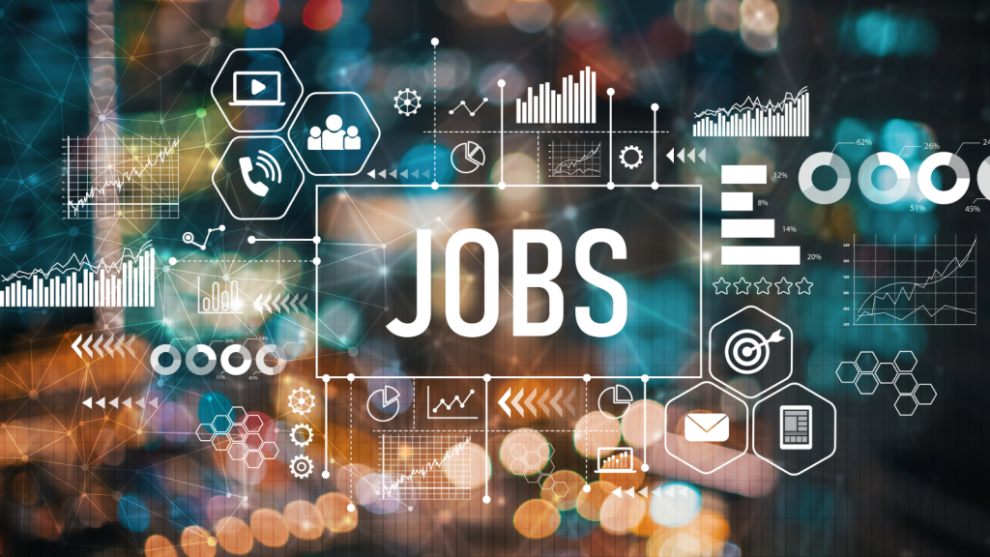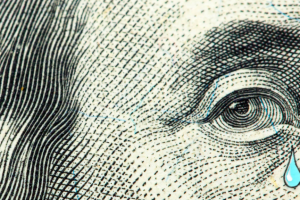
After December’s red-hot jobs report reignited inflation fears – and suggested that the Federal Reserve may not cut rates again for a while – the stock market has been left reeling.
In our view, this latest data is an unequivocal warning sign for market bulls. It seems stocks are not going to have a smooth ride higher in 2025.
However, it’s also far from the “death blow” that some bears are suggesting. In fact, we actually think today’s market rout could soon become a great buying opportunity.
But more on that later. First, let’s focus on the meat of this new jobs report to understand its potential impacts.
Last month, the U.S. economy added 265,000 jobs. That number is way above expectations for just 165,000 new jobs and higher than the long-term average job growth rate (around 200,000/month). In fact, it was the largest growth we’ve seen since March 2024.
The unemployment rate also unexpectedly fell from 4.2% to 4.1%. Job growth was widespread across sectors as cyclical hiring picked up steam.
No matter which way you slice it, the December jobs report was hot.

And of course, while it’s not always the case, more job growth and lower unemployment can mean more inflation.
That’s the predominant fear stifling the market right now.
Why This Jobs Report Has Investors Scrambling
When it comes to inflation, we are in a precarious position at the moment. Any reacceleration in the labor market could tighten labor conditions and cause inflation to reheat once again.
That fear was partially confirmed by a different economic report released this morning – the University of Michigan’s January Consumer Sentiment Survey. And that data showed a massive and unexpected increase in inflation expectations.
Short-term consumer inflation expectations rose from 2.8% to 3.3% – the biggest jump since October 2023. Meanwhile, long-term inflation expectations spiked to 3.3%, their highest level since June 2008.
In other words, long-term consumer inflation expectations have spiked to levels that we didn’t even see in 2022, when real inflation rates were close to 10%.

At the same time, overall consumer sentiment in the University of Michigan survey actually dropped, meaning we got more inflation without more growth.
All in all, it was a horrible report.
And it came on the heels of December’s red-hot jobs report, making investors exceedingly uncomfortable about the inflation outlook over the next few months.
The fear, of course, is that inflation reaccelerates without a meaningful pickup in economic growth. That would force the Fed to respond with less rate cuts, possibly even more hikes. In return, Treasury yields and financing rates would spike, popping the debt bubble and hobbling the U.S. economy. (For more in-depth analysis on present inflation risks, check out this recent issue of Hypergrowth Investing.)
That fear gained momentum today – and reasonably so. The data was awfully supportive of the bear thesis. Subsequently, investors have reduced their rate-cut bets to just one cut in 2025. The 10-year Treasury yield spiked to nearly 4.8%, and stocks sank.
But in our opinion, the market is getting ahead of itself here for a few reasons.
More Growth, More Inflation?
For starters, more growth does not necessarily mean more inflation. While it is true that in modern capitalism, economic growth and inflation do sometimes have a positive correlation, there are always exceptions to the rule.
Throughout the 1960s, for example, the U.S. economy consistently grew at a very robust pace, while inflation stayed low, around 1- to 2%. Similarly, during the Dot Com Boom of the 1990’s – which has strong parallels to today’s AI Boom – the U.S. economy grew consistently as inflation remained tame.
Clearly, it’s possible for the economy to achieve strong growth while maintaining low inflation. And we think that’s entirely possible today.
The AI Component
One key factor supporting this outlook is the widespread adoption of artificial intelligence across industries. These days, most companies are either already using or are considering using AI to improve their efficiency.
In fact, UBS recently surveyed 125 organizations and found that every single one is at least in the AI investigation and use-case discovery phase. We all know that AI can boost employee productivity and reduce labor resources and costs. Those massive productivity improvements are likely just beginning, and they should help keep inflation lower for longer.
Meanwhile, we believe that we are also just entering the era of robotics implementation in manufacturing. This automation should meaningfully boost productivity and increase the supply of goods circulating in the U.S. economy as well. And that should also serve as a disinflationary force that endures for the foreseeable future.
The Broader Economic Picture
Now, on the political side of things, the incoming administration is threatening tariffs, deportations, and deregulation – the sum of which are theoretically inflationary. However, President-elect Trump is also promising a significant increase in domestic energy production. That should decrease oil and gas prices, which should have a huge disinflationary impact.
And in terms of consumer spending, we just don’t think there’s enough ammunition there to push inflation that much higher. That is, back in 2020 and ‘21, generally “easy money” policies – such as stimulus checks, low financing rates, and easy access to capital – gave consumers a lot more excess spending firepower. That led to higher demand and higher prices for goods and services in 2022.
But we simply don’t have that setup today. There are no stimulus checks. Credit card debt is soaring, and consumers are paying high interest on that debt. Mortgage rates are up at 7%, and auto financing rates are in the double digits.
In other words, this is not an “easy money” era, which means there just isn’t enough consumer firepower to create excess demand for goods and services.
For these reasons, we think the most likely path forward for inflation is lower for longer.
The Final Word on December’s Jobs Report
Of course, more serious risks to the inflation picture could emerge in 2026 and ‘27. But for now, we think the inflation risks remain relatively small.
That’s why we think the market’s recent selloff will actually create a great buying opportunity.
Next week, we’ll receive a series of important inflation reports – the latest Consumer Price Index (CPI), Producer Price Index (PPI), and Import/Export Price data.
If those reports are soft, they will quell recent inflation fears, and stocks should rebound. We think that’s exactly what will happen.
And in our view, that will be a rebound worth buying.
At some point, this bull market in stocks will end – but not here, not now. Instead, stocks should continue to push higher throughout 2025.
And to maximize that profit potential, we’re looking to Elon Musk – the world’s richest man – and his big AI venture, xAI.
Click here to learn more about xAI now.
On the date of publication, Luke Lango did not have (either directly or indirectly) any positions in the securities mentioned in this article.
P.S. You can stay up to speed with Luke’s latest market analysis by reading our Daily Notes! Check out the latest issue on your Innovation Investor or Early Stage Investor subscriber site.




